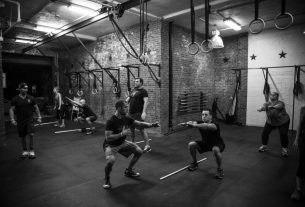The phrase training to failure is often used, both in the gym and in literature, but rarely described. A lot of people don’t even know what the definition means exactly. Speaking of definitions, is that definition so well defined? And even when we have this definition clear, it is good to realize that a huge number of factors have an impact on your output and therefore also on what failure is. After a night of drinking heavily, not sleeping and still having to deal with the traumatic experience of running over a mother duck with chicks on the way, your output will be a lot lower than if you are well rested. But more on that later.
DIFFERENT TYPES OF TRAINING TO FAILURE
So the short answer to the question above is no . There are different forms of ‘training to failure’, each with its own specific definition.
Since we are talking about movements here and movements take place on a continuum, it can be difficult to set hard boundaries. Still, we have to draw the line somewhere. That is why there are also intermediate forms of the demarcations below. But broadly speaking, we can divide training to failure into the following categories:
1. FAIL AT EXECUTION
This form of failure is the lowest on the dying spectrum; I want to define the definition of this form of failure as ‘the last repetition you can complete with your starting weight, without sacrificing execution, range of motion or other variables during an exercise’. This also includes tempo and the presence or absence of momentum.
2. COMPLETE FAILURE
This form of failure goes further than failure on execution, in that range of motion, tempo and other variables may be adjusted to allow for a few more repetitions. However, as a guideline for this, I suggest you keep in mind that a drop in range of motion in particular is acceptable, along with tempo and perhaps a little momentum. When a biceps curl with strict execution no longer succeeds, but partials still do, possibly with a little bit of momentum from below, you can squeeze out some extra volume to go from failure to execution to complete failure. However, when your bicep curls start to look more like back extensions, you have to wonder how much extra tension you are creating for the biceps.
3. PROLONGED FAILURE
I think you all know this form of failure. This is an extended version of failing execution, through weight reduction. It is important, however, that the execution remains as it was during the first repetition. In theory you could do this until you are curling with the pink dumbbells of the 65+ department; realize, however, that at some point the pressure becomes so low that there is hardly any added value from extra volume, while you do have to recover from this volume.

SHOULD YOU TRAIN TO FAILURE?
There is a lot of discussion about this, on forums, between bros/bras and coaches, but also in the literature. Some studies are set up with sets to failure and others are not. In addition, what definition of failure do they use in such studies? This is one of the reasons why scientific research is not an end all be all ; however, this is a topic for another time.
In the previous article about significant reps I talked about training with a minimum specific intensity and that only from a certain intensity all muscle fibers cooperate and in a sense only from a certain number of repetitions with a certain intensity repetitions ‘count’. Now you might think that training to failure is always desirable, since then you know for sure that you are doing the maximum number of significant reps. However, training to failure is a means, not an end. It is one of the tools in your toolbox.
Depending on the stimulus you want to achieve, training to failure may or may not be necessary. Do you remember what I’ve been hammering on in previous articles? It is important that you have in mind the goal of your training and that you work specifically on achieving that goal/stimulus. All the volume that you run on top of the necessary volume will cost extra recovery capacity, without necessarily generating more revenue.
Let’s divide the different stimuli into 3 options for now, namely metabolic, hypertrophy and neuro/strength (we could still divide these among ourselves, but I’ll leave that for now so as not to complicate the story).
TRAINING TO FAIL IN EACH OF THESE 3 OPTIONS WILL HAVE A DIFFERENT OUTCOME WITH DIFFERENT CONSEQUENCES
- Training to failure in a metabolic phase will increase the amount of oxidative stress resulting from this training. Using this at the right times (and when you can recover from it) can have benefits for the energy production of muscle cells, for example.
- Training to failure in a hypertrophy phase will actually increase the amount of mechanical damage, in addition to an increase in oxidative stress, allowing the recruitment of satellite cells to take place (read the article about different forms of hypertrophy again!)
- Training to failure in a neuro/strength phase is a method to ensure that you achieve high threshold motor recruitment . In other words, the phenomenon described in the article on significant reps; all muscle fibers help with the execution of the movement, even the muscle fibers that are only used under extreme load. In addition, the neurological efficiency of moving heavy weights will improve; if you want to get strong, you will have to train hard (at least at times).




